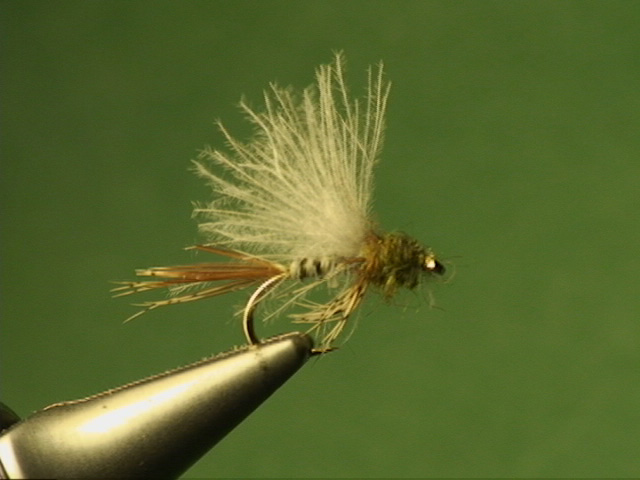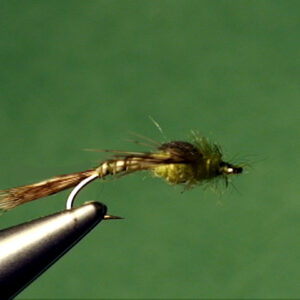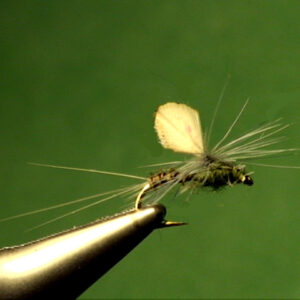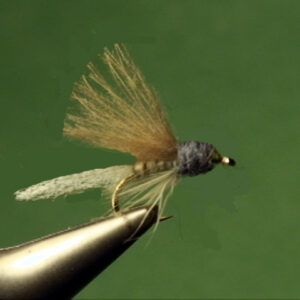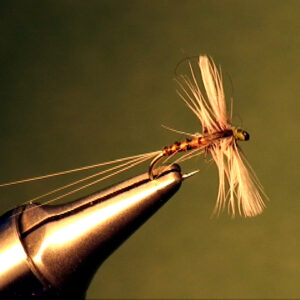Hook Size: 14/16/18/20
The Blue-winged Olive mayfly emerger is a trout fly that imitates the nymph changing to a dun. It looks a little more like the nymph than the dun. It imitates the nymph accenting from the bottom to the surface of the water. The CDC wing should float flush with the surface skim.
Most of the Blue-winged Olive emergers, or emerging mayflies, hatch in open water by
swimming to the surface and penetrating the surface film. Many are not able to do so
immediately, especially in calmer water, and the longer it takes, the better it is for the
trout. The dun flies away to nearby streamside vegetation as soon as its wings are dry
enough to fly.
For this reason, imitations of the emergers may be important, especially on smooth
flowing waters where they most often emerge. Although emergers work very well at times,
it’s important not to fish emerger patterns when they are not very productive. You may do
much better with the BWO nymph. More trout may be taken on the BWO nymphs that are
still rising to begin the emerging process over those that are in some stage of changing
into a winged fly, depending upon the number of nymphs versus emergers.
Some species, the punctiventris, futile, and the dubium, for example, crawl up the stems
of plants to hatch. If this is the case, then there is no use in imitating the emerger stage.
How would you know? Well, if you are not observing any duns on the water or fish that
roll and show their heads and then their tails, or fish that are hitting something on the
surface with a splashy rise, then you could assume the blue winged olives are crawling
out of the water to hatch. In this case, fish the bottom or emerging nymph imitation or wait
for the spinners to fall. Fishing an emerger or dun imitation would not be productive.
You don’t necessarily need to have both of our Perfect Fly Blue-winged Olive Emerger
patterns. The choice is strictly optional. The Emergers are a little more difficult to see and
require a little more skill to fish than the Emergers with the trailing shuck. It up to you to
decide which one of the emergers to use. Some anglers want both types and use the trail
and error method to determine which works best. Sometimes it seems the trout prefer the
trailing shuck duns and at other times it seems they prefer the non-trailing shuck version.
Presentation:
Normally, you will be presenting the Blue-winged Olive emerger or dun imitations over
smooth water. Trout usually just causally sip the emerging duns and cripples. This
requires a very delicate, more perfect presentation than the normal. You should use as
light of tackle as appropriate, say in the four-weight or lighter line weights.
Five X or six X tippets, two or three feet long on leaders totaling ten to 12 feet long is
usually needed.In many cases an upstream presentation does not work well in this calmer
water and you need to fish either across stream or downstream. Make certain there is no
drag by allowing some slack line. Usually, the extent of your success depends greatly
upon the presentation.
In other cases, where there is smooth water in pockets within larger areas of rough water,
the upstream presentation of the BWO emerger works very well. If you can get away with
it, fish upstream. You will usually spook less fish.
Copyright 2013 James Marsh
